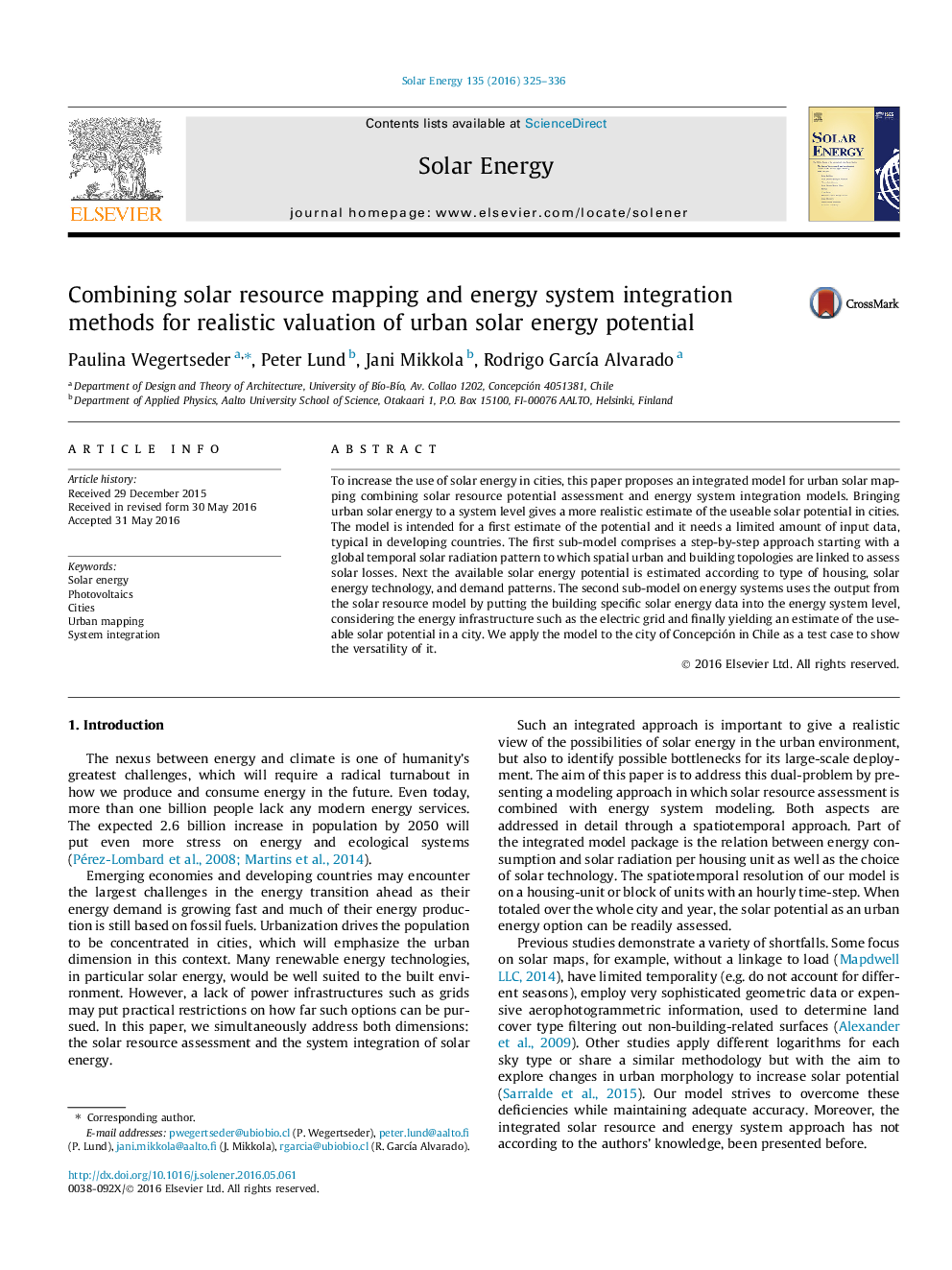| Article ID | Journal | Published Year | Pages | File Type |
|---|---|---|---|---|
| 7936748 | Solar Energy | 2016 | 12 Pages |
Abstract
To increase the use of solar energy in cities, this paper proposes an integrated model for urban solar mapping combining solar resource potential assessment and energy system integration models. Bringing urban solar energy to a system level gives a more realistic estimate of the useable solar potential in cities. The model is intended for a first estimate of the potential and it needs a limited amount of input data, typical in developing countries. The first sub-model comprises a step-by-step approach starting with a global temporal solar radiation pattern to which spatial urban and building topologies are linked to assess solar losses. Next the available solar energy potential is estimated according to type of housing, solar energy technology, and demand patterns. The second sub-model on energy systems uses the output from the solar resource model by putting the building specific solar energy data into the energy system level, considering the energy infrastructure such as the electric grid and finally yielding an estimate of the useable solar potential in a city. We apply the model to the city of Concepción in Chile as a test case to show the versatility of it.
Related Topics
Physical Sciences and Engineering
Energy
Renewable Energy, Sustainability and the Environment
Authors
Paulina Wegertseder, Peter Lund, Jani Mikkola, Rodrigo GarcÃa Alvarado,
